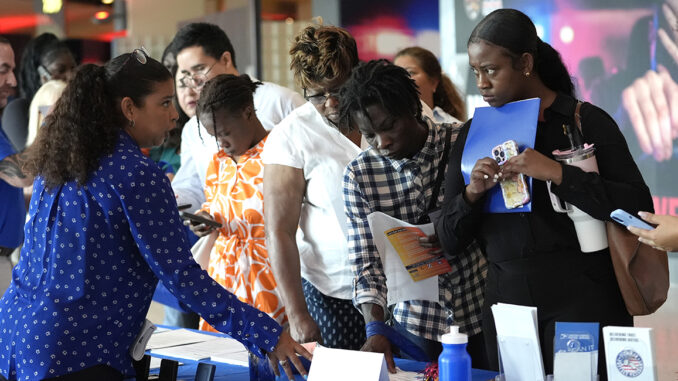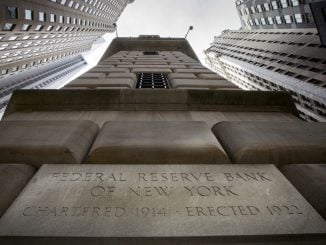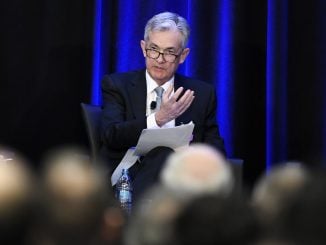
WASHINGTON, D.C. — Hiring by America’s employers picked up a bit in August from July’s tepid pace, and the unemployment rate dipped for the first time since March in a sign that the job market may be cooling but remains sturdy.
The Labor Department said Friday that employers added a modest 142,000 jobs, up from a scant 89,000 in July. The unemployment rate peaked at 4.2% from 4.3%, the highest level in nearly three years. However, hiring in June and July was sharply down by a combined 86,000. July’s job gain was the smallest since the pandemic.
“The labor market is weakening,” said Eugenio Aleman, chief economist at Raymond James Financial. “It is not falling apart, but it is weakening.”
The cooling jobs figures underscore why the Federal Reserve is set to cut its key interest rate when it next meets Sept. 17-18, with inflation falling steadily back to its target of 2%. Still, Friday’s mixed jobs data raises the question of how large a rate cut the Fed will announce. It could reduce its benchmark rate by a typical quarter-point or a larger-than-usual half-point. In the coming months, the policymakers will also decide how much and how fast to cut rates at subsequent meetings.
Influential Fed policymaker Christopher Waller suggested in a Friday speech that the central bank is leaning toward a quarter-point reduction this month. But he left the door open for larger rate cuts, if necessary, later this year.
“I do not expect this first cut to be the last,” Waller said. “With inflation and employment near our longer-run goals and the labor market moderating, it is likely that a series of reductions will be appropriate.”
“I am open-minded,” he added, “about the size and pace of cuts, which will be based on what the data tell us about the economy’s evolution.”
Collectively, Friday’s figures depict a job market slowing under the pressure of high interest rates but still growing. Many businesses are holding off on adding jobs, partly because of uncertainty about the presidential election’s outcome and how fast the Fed will reduce its benchmark rate in the coming months.
America’s labor market is now unusual: Jobholders are primarily secure, and layoffs are low, historically speaking. Yet, with the pace of hiring having weakened, landing a job has become harder.
Over the past three months, job growth has averaged only 116,000 a month, down sharply from an average of 211,000 a year ago. Economists say that over time, that may not be enough to keep up with the growth in the number of people looking for work. In the past three years, an influx of immigrants has enlarged the nation’s workforce.
August’s job gains were concentrated in just a few industries, with health care adding 44,000 jobs, restaurants, hotels and entertainment companies gaining 46,000, and construction 34,000. Steady hiring by restaurants and hotels could reflect ongoing gains in consumer spending, which rose last month even after adjusting for inflation. Manufacturers and retailers cut jobs in August.
In a major speech last month, Chair Jerome Powell suggested that the Fed’s policymakers have all but tamed inflation through high interest rates and don’t want to see the job market weaken further. The central bank is trying to achieve a “soft landing,” which drives inflation down from a 9.1% peak in 2022 to its target level without causing a recession. A lower Fed benchmark rate will eventually lead to lower borrowing costs for consumer and business loans, including mortgages, auto loans and credit cards.
For now, companies are posting fewer job openings and adding fewer workers. At the same time, Americans are far less likely to quit their jobs now than they were soon after the economy rebounded from the pandemic. In a strong job market, workers are likelier to quit, usually for higher-paying opportunities. With quits declining, fewer jobs are opening up for people out of work.
The Fed’s Beige Book, a collection of anecdotes from the 12 regional Fed banks, reported that many employers appeared to have become pickier about whom they hired in July and August. In August, the Conference Board surveyed Americans and found that the proportion of Americans who think jobs are hard to find has been rising, a trend often correlated with a higher unemployment rate.
At the same time, consumer spending, the principal driver of economic growth in the United States, rose at a healthy pace in July.



